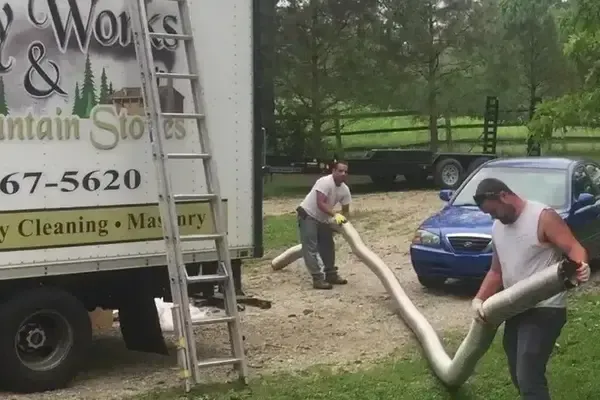
Buyers Guide - Chimney Liners
What is a chimney liner?
A chimney liner is the lining of the inside of your chimney. Chimney liners are typically made out of terracotta or clay. Some chimneys may have a steel or insulated stainless steel chimney liner.

A stainless steel liner can be inserted into an existing clay flue liner.
What does it do?
The liner protects the house from heat transfer to combustibles while it carries smoke away from your stove or fireplace. The liner sits inside your chimney flue. It can withstand high temperatures and resists acids in the smoke. It acts as a barrier and protects your house from the hot exhaust going up your chimney.

Why should you reline or upgrade your chimney flue?
Chimney relining is often the most practical and affordable way to repair a deteriorated or damaged chimney. Chimneys can be damaged by a number of things such as settling, storms and lightning but the most common form of chimney damage is a chimney fire.
In addition to chimney damage, older chimneys may be unlined or their liners may be deteriorated to the point where relining is warranted.
Additional reasons to reline may include:
To repair damage to the chimney, which may have been caused by a chimney fire, lightning strike, or settling, etc.
To upgrade old chimneys that were constructed without chimney liners.
To replace worn, deteriorated liners, which may be allowing smoke, creosote or condensation to seep through the chimney walls.
To properly size the chimney for a new appliance; such as converting from oil to gas heat.
To prevent excessive creosote buildup (and risk of a chimney fire) when venting a wood stove through an existing fireplace.
Options
All chimney liner purchases should come after recommendations by a certified chimney sweep have been made.
Options range from a repair to a complete replacement. Here are some options for chimney liners:
HeatShield® Cerfractory Flue Sealant Restores the Integrity of Your Chimney – HeatShield® is a specially formulated “Cerfractory®” sealant material that restores the integrity of your chimney’s flue to vent hazardous flue gases from your home. It eliminates the dangers in your chimney caused by gaps, cracks and spalling for years to come. By using either the Joint Repair System or Resurfacing System, depending on the defects found, your chimney will be restored to its original peak level of safety and efficiency. View the HeatShield® manufacturer’s website.
Stainless Steel – This method of relining involves installing a round or oval stainless steel liner in the chimney. The liner can be either rigid or flexible; flexible liners are used for chimneys with offsets. Stainless steel liners are used mainly for woodstoves and oil furnace installations. Chimney Works offers UL Listed stainless steel lining systems that come with a manufacturer’s Lifetime Warranty.
Aluminum – This method is similar to stainless steel, but the liner is made of aluminum. Aluminum liners can only be used to vent certain types of gas appliances. Note: Gas logs intended for installation in wood-burning fireplaces may not be vented with aluminum liners.
Flue Tiles – Used mainly in new construction, this method of relining may be suitable for short, straight chimneys.
Which option should I choose?
We recommend that you have an inspection done by a certified chimney professional. These professionals have specialized video scanning equipment that allows them to see inside your chimney.
Can I do it myself?
We recommend that only a certified chimney sweep perform this service, as does the CSIA.

